Letters from Lodi
An insightful and objective look at viticulture and winemaking from the Lodi
Appellation and the growers and vintners behind these crafts. Told from the
perspective of multi-award winning wine journalist, Randy Caparoso.
A California cork tree harvest, and why natural cork is the only choice for sustainable, regenerative and socially equitable closures
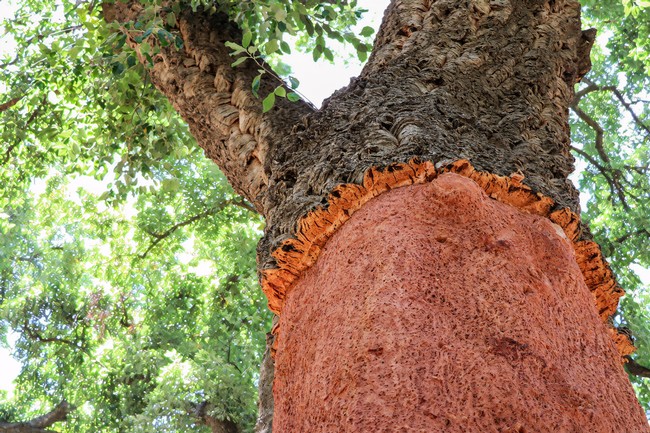
Just-harvested cork tree on UC Davis campus. Cork Supply USA.
It may be time to rethink your choice of bottle closures. This was the overriding message, this past May 2024, when for the first time in the entire United States, there was a harvesting of cork trees⏤on UC Davis campus.
The cork tree harvest was actually a demonstration conducted by Cork Supply USA for the benefit of students in the school's renowned Viticulture and Enology department, first established in 1880.
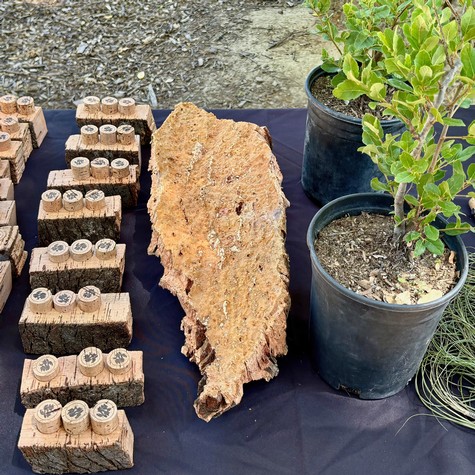
Demo table at UC Davis: Cork bark, partially cut corks and potted Quercus suber plants.
Cork Supply USA, originally founded in Northern California in 1981, is one of the world's largest suppliers of premium quality wine corks, now operating plants in South Africa, Australia, Europe, Argentina and (most recently) China.
Before you get too excited about the prospect of wine bottle corks finally being produced in California, though: One of the things students learned during the demonstration is that the bark from the two Davis campus trees stripped by the Cork Supply experts in the traditional European fashion⏤always completely by hand⏤were not quite of the quality meeting the standards of the wine cork industry. This is despite the fact that both of the harvested trees, over 80 years old, were authentic cork species (belonging to the oak family, Quercus suber).
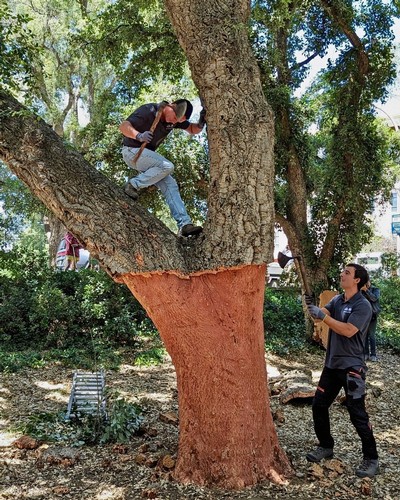
Cork Supply USA team demonstrating hand cutting of cork bark on UC Davis campus.
While the sight of the bark of trees being stripped all the way down to their flesh colored inner core, from the circumferences of the thick lower branches all the way to the ground, is somewhat disconcerting, students learned that removal of the bark does not harm cork trees in any way. Not only does the bark⏤a 100% renewable, biodegradable resource⏤grow back completely, it grows back better and stronger than ever.

Demonstration of hand harvesting of cork. Cork Supply USA.
Frederico Mayer, Cork Supply's Purchasing Director of Raw Material, explained: "Cork quality is always measured by density, porosity and tissue color. The Davis trees are excellent, extremely healthy, planted back in 1941. However, this is the first time they were ever harvested. In Portugal, trees are usually harvested for the first time after 25 years, yielding what we call 'virgin cork.' After that, the outer bark regrows and is harvested once every 9 years."
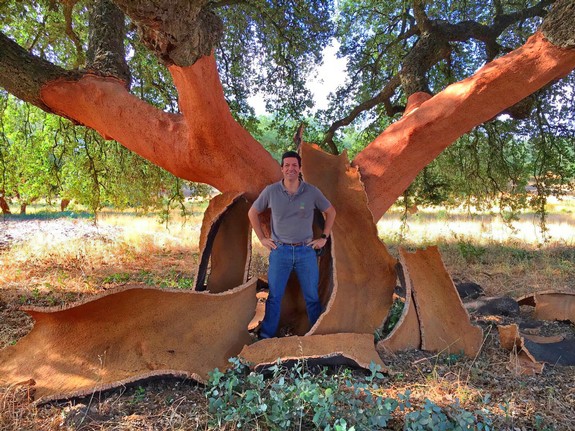
Cork Supply USA's Frederico Mayer with completely stripped cork tree following UC Davis demonstration. Cork Supply USA.
Added Mayer: "It is not usually until the third harvest, when a tree is at least 38 years old, that the bark meets the quality level necessary for use as bottle closures. The lifespan of a cork tree is naturally about 200 years. After that, they die by themselves. But of course, cork forests in Portugal are continuously replanted."
Emily Griswold, the Director of Horticulture and Teaching Gardens at UC Davis, added fascinating insights into the cork trees growing on the Davis campus: "Cork is an oak, and its natural habitat is in Mediterranean climate zones, which perfectly describes most of California. It's a little known fact, but there are over 500 cork trees planted here in Davis. Why? One, for academic reasons.
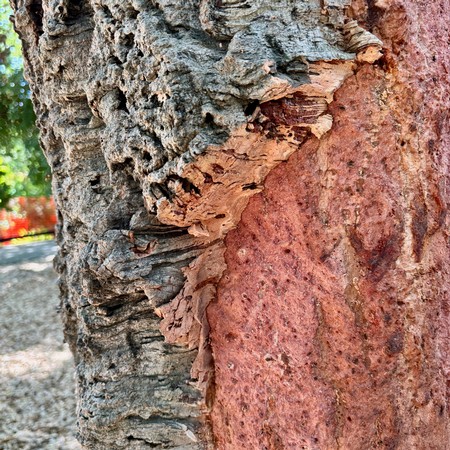
Close-up of just-cut cork bark at UC Davis.
"Two, because at one point, during World War II, it was thought that cork was needed for strategic defense purposes. Once the war ended, though, and the cork industry in Europe started up again, a California cork industry never got off the ground. Besides, we never had the expertise that they had in Europe, where the cork industry was already over 200 years old."
Portugal, where cork forests still cover over 8% of the country's total area, supplies over half of the world's cork material (there are also cork industries in Southern France, Spain and Sardinia). The trees are a protected species; its harvests, rigorously legislated and regulated.

Cork harvest tools.
It is precisely because of the naturally sustainable and biodegradable aspect of the material, according to Napa Green Executive Director Anna Brittain, "that cork, more than ever, is in greater demand by the wine industry. It is a net carbon negative product and helps to fulfill the social equity goals of sustainability.
"Within their natural habitat, cork trees contribute tremendously to biodiversity. The social equity aspect is that laborers who do the hand work in the protected forests have been doing it for generations and are among the highest paid ag workers in Europe. The Portuguese cork industry alone supports over 20,000 workers."
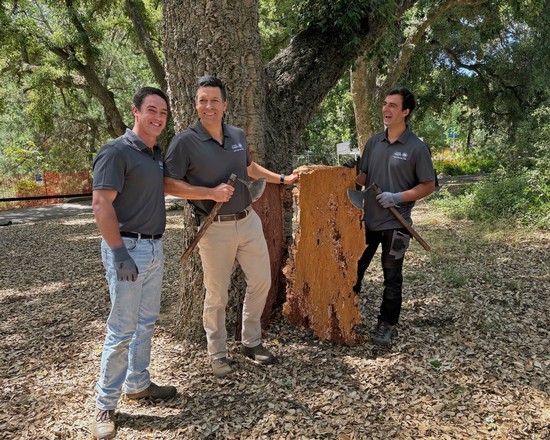
The Cork Supply USA teamwith first cut of 80-year-old cork tree on UC Davis campus.
Mayer elaborated on Brittain's observations by adding, "Only about 15% of cork bark harvests goes to the wine industry, although wine cork accounts for over 66% of the revenue. The rest goes to the building supplies, or use in recyclable products such as shoes, purses, paper.
"Not only does cork make the most best bottle closure there is, it is a historically and culturally significant product because of how it is grown, and contributes to the regenerative and sustainable goals that are more important than ever to the entire wine industry."
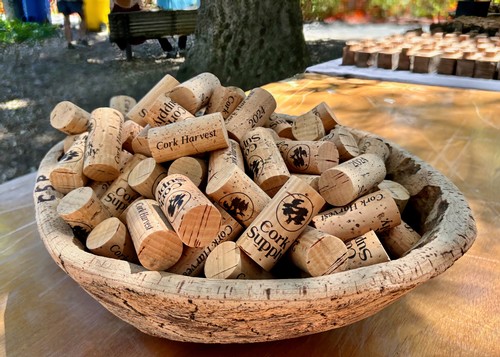
Samples of Cork Supply USA corks at UC Davis.